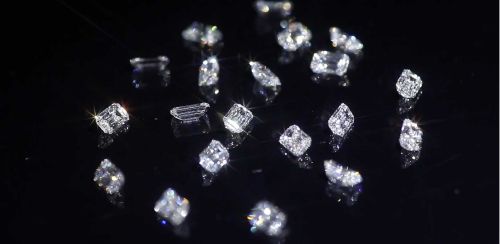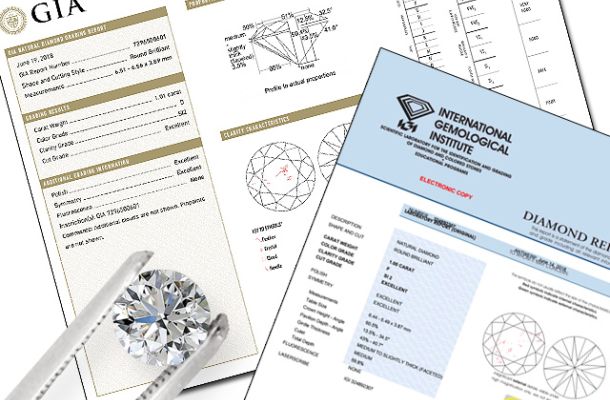A diamond has unique properties that allow it to be used in many areas. This mineral is in demand in various fields.
However, natural diamonds are very expensive, so there is a need to obtain a synthetic type of minerals. It is important to note that man-made diamonds are not inferior to natural diamonds in terms of their properties, which makes their use relevant and effective.
Cultured diamonds are grown in special laboratories. They have become very popular in recent years. The methods of growing this “product” are constantly being improved. Laboratory diamonds are actively used in jewelry, both single and colored fancy diamonds.
Today, there are 2 main techniques used to produce diamonds for jewelry making:
- HPHT;
- CVD.

The first uses high pressure and high temperature.
The second uses chemical sputtering.
Each method has its own characteristics.
HPHT Diamonds
An HPHT diamond is grown in a cell containing graphite and a metal that acts as a catalyst. This can be nickel or cobalt. When heated, the metal dissolves the graphite. Carbon atoms are deposited on the diamond in the cell. The color of the resulting “product” is influenced by additional elements. Titanium, boron or aluminum are used.
Nitrogen from the environment enters the cell and gives the diamond its yellow color. However, aluminum and titanium interact with nitrogen to reduce the saturation of this color component. In some cases, this color can be completely removed.
Next, the cell containing the diamond is placed in a press. The artificial mineral is subjected to a pressure of 55,000 atm, and heated to 1,500 degrees. It turns out that the laboratory recreates the natural conditions for growing a diamond.
CVD diamonds
Thanks to this method it is possible to obtain diamond monocrystals up to 10 carats. There is no need to use high pressure. The production of this type of diamond also begins with a monocrystal substrate that is placed in a special reactor flask. Inside the flask there is hydrogen and a small amount of methane (about 1-5%). The pressure is about 0.1 atm. With the help of microwaves, this content is heated up to 1000 degrees.Synthetic Diamond CVD
The result is a plasma of hydrogen and carbon. Carbon is deposited on the surface of the etched diamond, resulting in new layers of CVD type “product”. An almost colorless or brown sample is obtained. The dimensions of the diamond produced in this way are determined by the parameters of the substrate. The thickness of such products rarely exceeds 1-3 mm.
If a polycrystalline or silicon sample is used, a sample without unique properties is obtained. The application of these diamonds is rather limited.
Many brown CVD type “products” are additionally treated by HPHT. This makes it possible to obtain lighter samples and to produce diamonds of higher color groups.
Lab Grown Diamonds in Jewelry
The growth rate depends on the temperature difference in the cell. Increasing this difference leads to an acceleration of the process and an increase in the number of metal inclusions used in the synthesis of the diamond. Such inclusions are very important in determining the nature of the artificial mineral. With this method, the “product” is grown in tens or hundreds of hours.
Thanks to HPHT technology, yellow diamonds can be produced quickly and easily enough. If another color is desired, the crystals must undergo additional treatment.
The electron beam irradiation method is used to obtain a synthetic “product” of green color. It is used after the final treatment of the crystal. Boron is used to produce gray, blue and blue samples. This affects the lattice of the diamond and gives the desired color. However, the growth of these minerals is slower.
Colorless diamonds are produced when the process is done without the use of nitrogen and boron. The largest synthetic colorless diamond was created in Hong Kong in 2015. This unique diamond weighed 10.02 carats. It was made from a 32.26 carat HPHT diamond. It took 300 hours to grow the mineral.

Diamond Characteristics
Diamonds composed of high purity monocrystals are up to 8 mm in size. They are samples of transparent color, where the optical transparency index varies from 225 nm to 25 μm. Nitrogen concentration is 0.5-2 ppm. The thermal conductivity index can reach 2200 W/mK, the specific electrical resistance is more than 10.12 Ohmxm. The low level of luminescence and the perfection of crystal structure are worth mentioning. Hardness index is 105 GPa and more.
Samples with semiconductor single crystals have the same dimensions. Ionization energy is 0.19-0.37 eV. The resistivity index is up to 1.09 Ohm. The color of the samples can vary from blue to black. Boron content is up to 300 ppm.
Where man made diamonds are used?
- Powders, suspensions, pastes.
- Artificial diamonds of various shades and shapes.
- Plates.
- Windows.
- Monocrystals and polycrystals.
- Anvils.
- Products used in eye surgery.





